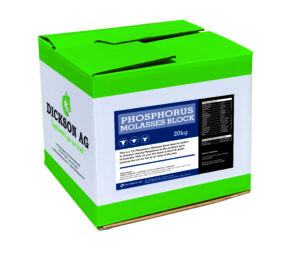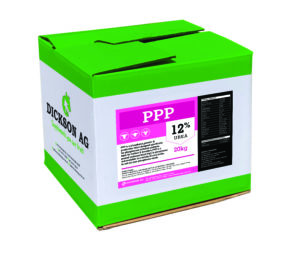Bull Development & Supplementation of First Calf Heifers
Supplementing first-calf heifers during lactation rather than feeding stud bulls post-weaning has been found to result in greater scrotal circumference, increased sperm motility and sexual maturity at an earlier age.
Conducted by Dr Viv Perry from the Queensland Sperm Morphology Laboratory, and PhD student Matt Callaghan, the research is part of a quest to identify management practices that will enable bulls to meet sale specifications without the use of deleterious practices.
Dr Perry said the increasing demand by commercial beef producers for younger bulls had created a challenge for seedstock producers in northern Australia because of the delayed pattern of sexual development following pasture based production in Bos Indicus or Bos indicus/Bos taurus bulls often prohibits widespread use for breeding purposes until 18-24 months of age.
"In attempting to overcome the challenge of delayed reproductive development, seedstock bull producers in northern Australia have adopted the feeding of high-energy diets to bulls for extended periods after weaning and particularly prior to sale," she said. "This management practice has been frequently associated with detrimental effects upon sperm production and quality. "The deleterious effects of feeding high-energy diets after weaning and during preparation for sale have led to our investigations of an alternative strategy."
Take-home Message
Dr Perry said the take-home message for producers was that it was economically viable to supplement heifers during lactation, rather than trying to increase bull weight prior to sale, "which can be deleterious to both their semen and to their leg structure".
"We found that where the mothers had been supplemented during lactation, even though they received no supplementation after weaning compared to their counterparts, those calves reached puberty earlier and their scrotal circumference increased at a faster rate," she said.
Their first research paper - examining the effects of supplement feeding on dam milk production and liveweight, bull calf growth, live carcase characteristics and metabolic hormone concentrations - showed that supplemented heifers reared bull calves that were heavier at weaning, with increased levels of metabolites and growth hormone, and these bull calves went on to have greater eye muscle area.
"Thus when primiparous heifers experience moderate nutritional restriction during lactation, supplementation may have persistent effects upon decreasing the carcase muscle characteristics of bull progeny," Dr Perry said.
"The second paper (using the same animals) shows that supplemented heifers reared bulls calves that had greater scrotal circumference, increased sperm motility and increased per cent normal sperm. "These bull calves reached sexual maturity at an earlier age than supplemented bull calves.
"Thus, improving the plane of nutrition supplied to Bos indicus/Bos taurus-cross bulls between parturition and weaning via moderate supplementation of grazing dams reduces age at sexual maturity with consequent economic advantages to the producer."
Methodology
The research took place on-property at Ravensbourne, Blackall, with 62 first-calf heifers from the Walker family's Santa Gertrudis herd.
The grazing heifers were randomly allocated to the treatment groups to receive either nil supplement (control group), or provided with unrestricted access to a self-fed, vegetable protein meal-based, pelleted supplement containing 350g of crude protein per kilogram of dry matter during lactation.The bull calves were weaned at 199 days (+/- 26 days).
Diet quality and blood metabolites confirmed that unsupplemented heifers experienced nutritional restriction during lactation, reducing milk yield and consequently the bull calves were 17.5kg lighter than their counterparts in the supplemented group at weaning. The difference in liveweight did not persist in the period after weaning, during which time the bulls were aggregated into a single group and grazed rangeland pastures without access to supplements until the conclusion of the experiment at 675 days.
Hormone concentrations, scrotal circumference, semen quality parameters, age at puberty and age at sexual maturity data was analysed to conclude that pre-weaning supplementation of the dam in rangeland Bos indicus/Bos taurus-cross beef cattle is sufficient to initiate increased calfhood testosterone concentrations in the bull offspring.
"This consequently enhanced testicular development of the bulls reared by supplemented dams leading to increased scrotal circumference, sperm motility and morphology," the research report states."These effects were commensurate with hastened reproductive development and were manifested in early age at sexual maturity."
This research was funded by Ridley Agriproducts, of which Matt Callaghan is an employee.
Supplementing first-calf heifers during lactation rather than feeding stud bulls post-weaning has been found to result in greater scrotal circumference, increased sperm motility and sexual maturity at an earlier age.
Conducted by Dr Viv Perry from the Queensland Sperm Morphology Laboratory, and PhD student Matt Callaghan, the research is part of a quest to identify management practices that will enable bulls to meet sale specifications without the use of deleterious practices.
Dr Perry said the increasing demand by commercial beef producers for younger bulls had created a challenge for seedstock producers in northern Australia because of the delayed pattern of sexual development following pasture based production in Bos indicus or Bos indicus/Bos taurus bulls often prohibits widespread use for breeding purposes until 18-24 months of age.
"In attempting to overcome the challenge of delayed reproductive development, seedstock bull producers in northern Australia have adopted the feeding of high-energy diets to bulls for extended periods after weaning and particularly prior to sale," she said.
"This management practice has been frequently associated with detrimental effects upon sperm production and quality. "The deleterious effects of feeding high-energy diets after weaning and during preparation for sale have led to our investigations of an alternative strategy."
First published - https://www.queenslandcountrylife.com.au/story/6771956/improving-bull-development/?cs=4785
For the best results, use the Dickson Ag Phosphorous Molasses or PPP block.



